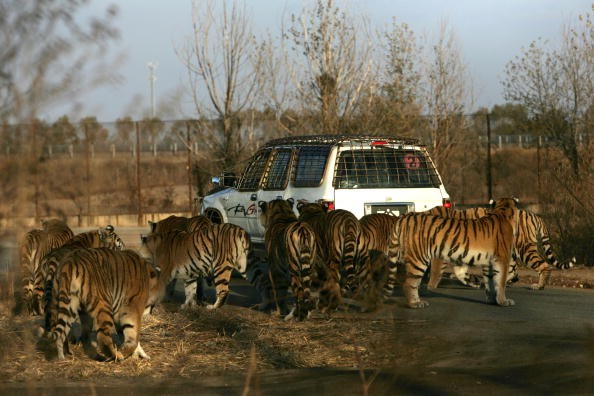After almost a century, the population of wild tiger has witnessed an increase globally. This has provided hope to conservationists, as the rise in number comes after several decades of dwindling population of the big cat across the world.
Currently, there are at least 3,890 tigers in the wild, representing a considerable increase in their numbers since 2010, when their population was around 3,200, World Wildlife Fund (WWF) reported. While the WWF is thrilled at the increase of wild tiger population, it is still cautious in this regard and said that "much still needs to be done."
The number of wild tigers is on the rise for the first time following several decades of continuous decline in their population, Science Alert quoted WWF International director general, Marco Lambertini, as saying. According to Lambertini, this significant increase in the number offer immense hope and demonstrates that it is possible to conserve both species as well as their habitats when the governments, local public and conservationists work in tandem.
According to the WWF, several factors have contributed to the higher numbers, which has been compiled from various national tiger surveys undertaken across the globe. While the factors range from providing the animals with improved protections to augmented surveying techniques, in general, the rise in wild tiger population is mainly owing to enhanced tiger populations in India, Nepal, Russia and Bhutan.
Without any doubt, India has the highest number of wild tigers, followed by other Global Tiger Forum (GTF) member nations like Russia, Indonesia, and Malaysia. In addition, Bangladesh, Nepal, Thailand, Bhutan, China, Myanmar, Lao and Vietnam also have contributed to the growth of wild tiger population, albeit in a smaller manner.
Leaders of all the nations mentioned above joined a global effort in 2010 called the Tiger Initiative Tx2, with a mission to increase the number of tigers two-fold by 2022. Although the rise in wild tiger population is an indication that the efforts are in the right direction, many conservationists involved with the mission have asserted that it would be quiet difficult to double the number of tigers in such a brief span.
In the meantime, it is worth mentioning that tiger conservation still faces some real threats. According to the WWF, authorities seized an estimated 1,590 tigers between 2000 and 2014 from the unlawful wildlife trade. However, it is possible to curb such poaching menace provided all the nations track the precise number of wild tigers living within their borders.
Watch the tiger conservation campaign video below:



























